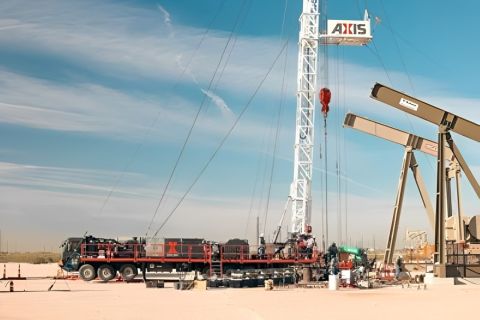In 2013 Wood Mackenzie estimates that the Eagle Ford will produce 844,000 b/d of crude and condensate, or a staggering 12% of the US total. This establishes the South Texas play as the largest producer of tight oil globally, overtaking the Bakken by 1% this year.
The play’s production growth is underpinned by investment returns that are among the best of any play in North America. Through 2015, Wood Mackenzie expects more than US $130 billion to be invested in the play, resulting in 1 Bbbl of crude oil and condensate production. This year, operators are expected to spend $28 billion – double that of 2010.
Subplay regions drive activity
While the top line numbers are impressive, the real story lies deep within the subplay regions. Wood Mackenzie’s new key play content divides the Eagle Ford into nine distinct areas. Each area has unique geological properties, which generate a wide range of economic outputs. The Karnes Trough, Edwards Condensate, and Black Oil areas drive activity in the play as production is the sought-after light oil and gas condensate. These areas capitalize on higher value liquid streams and increased flow rates from formation gas drive.
The Karnes Trough and Edwards Condensate subplay areas, where breakeven is estimated at below $60/bbl, will continue to outperform other areas. With more than 12,000 undrilled locations in these two areas combined, there is still a sizable and scalable reward. Together, these areas account for 61% of the play’s remaining post-tax NPV10. These also account for 47% of the play’s wellhead liquids production. Remarkably, these two areas account for less than 10% of the play’s total footprint. Demand for core land is highest in the Karnes Trough, where Wood Mackenzie estimates an average acre is worth $45,000.
The other subplay areas continue to attract capital. The Black Oil area accounts for 33% of Eagle Ford’s crude and condensate production. While oil is the higher value commodity, the lack of matrix flow rates diminishes well economics in the north of the play. The Edwards Condensate and Hawkville Condensate generate positive returns. Here considerable upside exists in the rebound of natural gas and NGL prices.
Generating positive returns
Some niche operators are even finding ways to generate pockets of positive returns from the play’s dry gas window. In the Southwest Gas area, Escondido Resources II has achieved 30-day initial production rates of 368 Mcm/d (13 MMcf/d). Analysis shows profitability at these high rates despite the dry gas production from a deep and expensive well.
But outside the core, repeatability is still questionable. In the northeastern Woodbine Oil area there has been a retooling process, where acreage previously written off for the Eagle Ford has re-emerged prospective for the Woodbine formation. Today, with more than 50% of wells being drilled from pads, operators have moved from testing into batch-manufacturing mode. Operators have been able to increase drilling speed from 152 m/d (500 ft/d) in 2010 to more than 213 m/d (700 ft/d) in 2012. Lateral lengths have settled around 1,220 m to 1,677 m (4,000 ft to 5,500 ft) with 15 to 24 frac stages.
And the leading players, who amassed scalable core acreage positions, hold billions of dollars in remaining value. Wood Mackenzie estimates the top four companies in the play – EOG Resources (639,000 net acres), BHP Billiton (332,000 net acres), ConocoPhillips (227,000 net acres), and Marathon (200,000 net acres) – have a combined remaining post-tax value of $42 billion.
Differing development strategies
Corporate strategy also is still influencing development. Independents are rewarded for following the “cash flow is king” law. By drilling as few as two wells per pad, these operators are able to complete wells and move their product to markets quickly. By flowing large initial rates, they extract large volumes earlier but risk damaging total recoverable reserves by exerting excessive formation drawdown forces. These smaller operators’ asset portfolios are often highly weighted to the Eagle Ford and leverage joint venture and cost-carry agreements to maximize value. For example, Carrizo partnered with Gail in 2011, and despite only holding 48,000 net acres has an average acre value of $25,000.
Conversely, the majors are managing production flow rates to maximize reserves as reserve replacement ratios take priority. These operators have the capital to develop their core acreage and extract tremendous amounts of value. This is especially true for those companies with lower entry costs such as organic grassroots leasing. The difference between leasing for $300/acre and purchasing for $25,000/acre can make or break full-cycle economics.
But what is truly impressive is how weighted these large operators are to the play, especially considering that Marathon, ConocoPhillips, and EOG Resources all have a core position in the Bakken. BHP Billiton, ConocoPhillips, and EOG Resources also all hold a core acreage position in the emerging Permian Wolfcamp as well as the Permian Bone Spring.
Unique challenges
Every play has a unique set of challenges. Thus far, players have overcome issues with water supply, electrical grid connections, processing, and labor supply, which can delay operations and increase costs. But there also is tremendous upside in the play through downspacing and testing additional horizons.
Operators are testing 40-acre well spacing, and if the Karnes Trough and Edwards Condensate were to be fully developed on this tighter spacing, it would more than double the number of assumed well locations. Operators also are exploring the Pearsall, Buda, and Austin Chalk, which could all add incremental value. But overall, it is a challenge for any play to rival the scale and profitability of the Eagle Ford.
Recommended Reading
Axis Energy Deploys Fully Electric Well Service Rig
2024-03-13 - Axis Energy Services’ EPIC RIG has the ability to run on grid power for reduced emissions and increased fuel flexibility.
AI Advancing Underwater, Reducing Human Risk
2024-03-25 - Experts at CERAWeek by S&P Global detail the changes AI has made in the subsea robotics space while reducing the amount of human effort and safety hazards offshore.
Tech Trends: QYSEA’s Artificially Intelligent Underwater Additions
2024-02-13 - Using their AI underwater image filtering algorithm, the QYSEA AI Diver Tracking allows the FIFISH ROV to identify a diver's movements and conducts real-time automatic analysis.
Oil States’ ACTIVEHub for Digitized Assets
2024-03-14 - Oil States Energy Services’ new ACTIVEHub system and ACTIVELatch help operators remotely monitor and automate frac locations for a more efficient and safer wellsite.
CERAWeek: AI, Energy Industry Meet at Scary but Exciting Crossroads
2024-03-19 - From optimizing assets to enabling interoperability, digital technology works best through collaboration.





